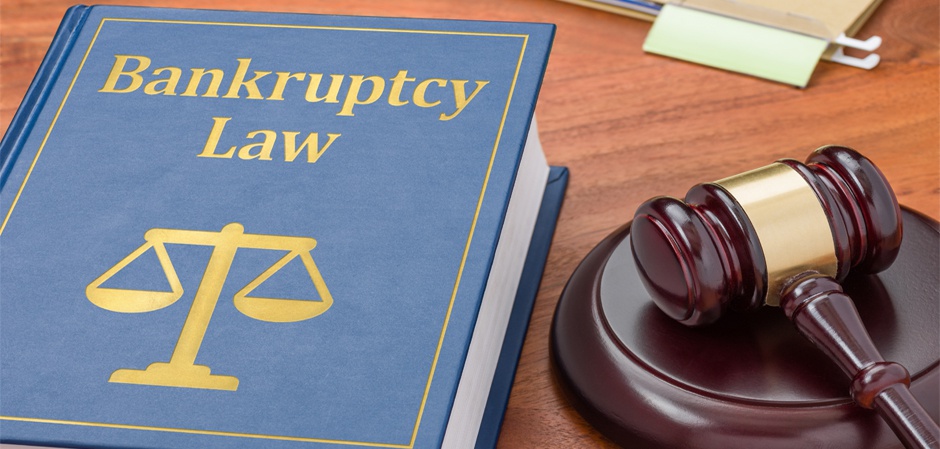This is a terrible word "bankrupt"
part 1 < strong>part 2
Continuation of the interview with a member of the Expert Council of the Moscow Region Chamber of Advocates, a practicing lawyer, Yanis Yuksha, regarding the Federal Law on Insolvency (Bankruptcy)».

– Yanis Alexandrovich, please tell us about the bankruptcy procedureof individuals.
To start the bankruptcy procedure, an individual needs to file an application to the court. Bankruptcy cases of citizens and individual entrepreneurs, as well as legal entities, are considered by the arbitration court.
Both the debtor and his creditor can apply to the court for declaring a citizen bankrupt. At the same time, the debt must be at least 500 thousand rubles, and the delay in payments is at least 3 months. A citizen's bankruptcy case may be initiated after his death. In this case, the creditor, the authorized body or the debtor's heirs file an application to the court. When considering a citizen's bankruptcy case, the court may apply debt restructuring. In the absence of creditors' objections, the court may approve a debt repayment plan, which specifies: the term of its implementation, the amount of monthly amounts left to the debtor and his family members (a kind of subsistence minimum), and the amount of amounts that are supposed to be sent monthly to repay creditors' claims. If debt restructuring is not possible, the debt of an individual declared bankrupt can be repaid at the expense of his property.

Are there any restrictions on the seizure of property?
Of course. The debtor's only dwelling, as well as the land plots on which it is located, items of ordinary household furniture and household items, things of individual use (clothing, shoes, etc.), property necessary for the professional activities of a debtor citizen, with the exception of items whose value exceeds 100 minimum wage, cannot be withdrawn on account of debt payment. established by federal law. In rural areas, these are also, as a rule, breeding, dairy and working cattle, deer, rabbits, poultry, bees, feed, as well as farm buildings and structures necessary for their maintenance (used for purposes not related to the implementation of entrepreneurial activity). Food and money for a total amount of at least the established minimum subsistence level for the debtor citizen and persons dependent on him, fuel needed by the debtor citizen's family for cooking daily meals and heating residential premises during the heating season, means of transport and other property necessary for the debtor citizen, if he is disabled, as well as prizes, state awards, honorary and commemorative signs of the debtor.
– What is the threat of bankruptcy to individuals?
The court may prohibit the debtor from traveling abroad until the completion of the procedure for the sale of his property. The court imposes an arrest on the property of a citizen. The temporary manager, before the bankruptcy case is considered by the court, evaluates the property. From the moment a citizen is declared bankrupt, the accrual of penalties stops. After the court's decision on bankruptcy, the accrual of fines, penalties, interest and other financial sanctions for all obligations of a citizen stops. The court sends the decision to declare a citizen bankrupt and to open bankruptcy proceedings to all known creditors with an indication of the deadline for filing claims, which cannot exceed two months. The status of a bankrupt remains with a citizen for five years.

There is an opinion that, having gone through the bankruptcy procedure once, an individual entrepreneur will never be able to resume his activities again. Is it so?
– « Never» – is not a legal concept. From the moment the arbitration court makes a decision on declaring an individual entrepreneur bankrupt and on the introduction of the sale of a citizen's property, the state registration of a citizen as an individual entrepreneur becomes invalid, and the licenses issued to him for carrying out certain types of entrepreneurial activity are canceled. And within five years from the moment of completion of the procedure for the sale of a citizen's property or termination of bankruptcy proceedings, an individual entrepreneur recognized as bankrupt cannot be registered as an individual entrepreneur. In addition, within five years from the same date, an individual entrepreneur is not entitled to carry out entrepreneurial activities, as well as hold positions in the management bodies of a legal entity or otherwise participate in the management of a legal entity. However, five years is still quite a foreseeable and finite period.
What are the pros and cons of bankruptcy proceedings?
In fact, when properly applied, accompanied by a lawyer, there are many positive aspects in the bankruptcy procedure that sometimes help to save the company. Debt is being written off, there is no need to deal with collectors, all penalties and fines are canceled, court decisions are suspended. But still, bankruptcy is a force majeure step. Firstly, additional funds are needed for this procedure, and the process itself takes a lot of time. Secondly, the bankrupt is obliged to realize savings and sell the property in a limited time, which often do not allow waiting for the most profitable buyer. Financial expenses and transactions are tightly controlled by an external manager. So, of course, it is better to plan your activities wisely and not bring your business to such a turn.
Author: Svetlana Skobeleva
Photo: shutterstock.com











